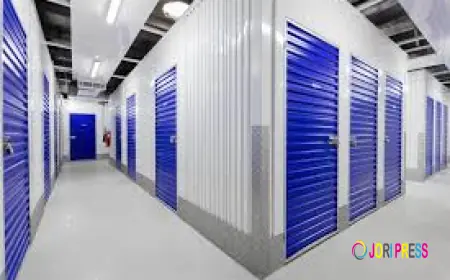High-Performance Plastic Additives Market Size and Growth: A Deep Dive into Key Sectors
High-Performance Plastic Additives Market Size and Growth: A Deep Dive into Key Sectors
According to the TechSci Research report, High-Performance Plastic Additives Market – Global Industry Size, Share, Trends, Competition Forecast & Opportunities, 2030F, the global High-Performance Plastic Additives Market reached a valuation of USD 1.35 billion in 2024. The market is projected to expand at a CAGR of 9.15% during the forecast period, driven by ongoing innovation in additive chemistry and the increasing demand for advanced polymer solutions across industrial applications.
High-performance plastic additives are specialized chemical formulations that enhance the functional properties of polymers, enabling them to meet the increasingly stringent performance requirements of diverse end-use sectors. From transportation and electrical to healthcare and renewable energy, these additives are critical in enabling lightweight, durable, and multi-functional plastic components.
Innovation in High-Performance Plastic Additives
The high-performance plastic additives landscape is evolving rapidly, with innovations focusing on multi-functional performance enhancement. The latest generation of additives provides integrated solutions such as:
-
UV Stabilization with Anti-Static Behavior: Protects polymers from photodegradation while minimizing static buildup.
-
Flame Retardancy with Enhanced Processability: Ensures safety in critical applications without compromising ease of manufacturing.
-
Antioxidants for Weatherability and Recyclability: Extends the lifespan of plastics under harsh environmental conditions.
Additionally, emerging technologies such as nano-engineered additives, bio-based chemistries, and customized polymer modifiers are broadening the functional scope of high-performance plastics. These innovations are unlocking new applications in advanced manufacturing and providing tailored solutions for highly specialized performance requirements.
Market Dynamics and Growth Drivers
The demand for high-performance plastic additives is largely influenced by global industrial trends. One of the most significant drivers is the ongoing electrification of transport and renewable energy adoption, which requires polymers capable of handling extreme thermal, chemical, and electrical stress.
Key growth factors include:
-
Electric Vehicles (EVs): Plastics used in EV battery enclosures, high-voltage insulation, and structural components require additives for thermal stability, flame retardancy, and long-term durability.
-
Renewable Energy Applications: Additives improve the performance of polymers in solar module frames, wind turbine blades, and other components exposed to harsh environmental conditions.
-
Advanced Manufacturing: High-performance additives enable lightweight, mechanically robust, and multifunctional plastics critical for aerospace, electronics, and construction sectors.
Despite their advantages, high-performance additives present challenges in material engineering:
-
Heterogeneous Polymer Compatibility: Different base polymers may have distinct chemical properties, complicating additive integration.
-
Simultaneous Performance Requirements: Achieving flame resistance, UV stability, and mechanical strength concurrently can be complex.
-
Processing Constraints: High temperatures, shear forces, or sensitivity to degradation can limit additive use.
-
Long-Term Stability: Migration or degradation over time can affect performance, necessitating advanced formulation strategies.
Overcoming these challenges requires precise formulation, advanced compounding techniques, and collaboration between additive suppliers and end-users to maintain reliability and regulatory compliance.
Segmental Analysis: Ingredient Insights
The High-Performance Plastic Additives Market is segmented based on plastic type, additive type, end-user application, regional distribution, and competitive landscape.
Plastic Type Segmentation
High-performance additives are compatible with a wide variety of polymers, including:
-
Fluoropolymers: Offer chemical resistance and high-temperature performance.
-
High-Performance Polyamides: Provide mechanical strength and durability for engineering applications.
-
Sulfone Polymers: Ideal for electrical and aerospace applications due to thermal stability.
-
Other Engineered Plastics: Tailored solutions for niche industrial requirements.
Additive Type Segmentation
Additives are designed to enhance specific polymer characteristics:
-
Plasticizers: Improve flexibility and processability.
-
Flame Retardants: Ensure compliance with fire safety regulations.
-
Lubricants: Reduce wear and friction during manufacturing.
-
Antioxidants: Prevent degradation from UV, heat, or chemical exposure.
-
Other Specialty Additives: Customized solutions for multi-functional performance.
End-User Segmentation
Among the end-users, the transportation sector emerged as the largest segment in 2024. Automotive and aerospace industries are increasingly replacing metals with high-performance plastics to meet stringent fuel efficiency and emission standards. Additives such as impact modifiers, flame retardants, and UV stabilizers ensure the plastics maintain performance under mechanical and thermal stress.
Key applications include:
-
Automotive Components: Interior trims, under-the-hood parts, and fuel system components enhanced with antioxidants, lubricants, and heat stabilizers.
-
Aerospace Components: Compliant with global fire, smoke, and toxicity (FST) regulations.
-
Rail and Mass Transit: Plastic interiors, structural components, and electrical insulation systems benefiting from multifunctional additives.
High-performance additives also improve lifespan and reliability, reducing wear and tear while ensuring consistent performance across the vehicle’s operational life.
Regional Insights
The Asia Pacific region is expected to register the fastest growth in the High-Performance Plastic Additives Market, driven by industrial expansion, regulatory evolution, and rapid adoption in sectors such as automotive, electronics, and construction.
Key regional trends include:
-
Industrial Expansion: Countries like China, India, South Korea, and ASEAN nations are witnessing increased advanced manufacturing.
-
Electric Vehicle Adoption: Rising production of EVs creates demand for thermally and chemically resistant polymers.
-
Infrastructure Development: Urbanization and smart infrastructure projects are pushing the demand for engineered polymers.
-
Regulatory Compliance: Governments are enforcing stricter environmental and product safety regulations, encouraging sustainable additive adoption.
The region’s robust growth is further supported by rising consumer expectations for safety, durability, and multifunctional polymer applications.
Competitive Landscape
The global High-Performance Plastic Additives Market is highly competitive, with leading companies investing in R&D and strategic expansions. Major players include:
-
BASF SE
-
Saudi Basic Industries Corp
-
Arkema S.A.
-
Solvay S.A.
-
Evonik Industries AG
-
3M Co.
-
L.Brueggemann GmbH & Co. KG
-
Ensinger GmbH
-
Colloids Ltd.
-
Colortech Inc.
These companies focus on developing customized additive solutions to meet evolving performance, safety, and sustainability requirements across multiple industries.
Future Outlook
The global High-Performance Plastic Additives Market is expected to continue its robust growth trajectory. Increasing demand for polymers with advanced functionalities, coupled with innovation in additive chemistries, will drive expansion across key end-use sectors such as:
-
Automotive and Transportation: Lightweighting, fuel efficiency, and emission compliance.
-
Renewable Energy: Enhanced durability and performance of polymers in solar and wind applications.
-
Electronics and Electrical: High-voltage insulation and thermal stability.
-
Healthcare: Biocompatible, sterilizable, and multifunctional plastics.
Strategic collaboration between additive manufacturers, polymer producers, and end-users will be critical in developing solutions that meet stringent performance and regulatory standards. The market’s growth will also be influenced by ongoing innovation in bio-based and nano-engineered additives, which are opening new application avenues.
Benefits of High-Performance Additives in Polymers
-
Enhanced Mechanical Performance: Increases strength, toughness, and impact resistance.
-
Thermal and Chemical Stability: Extends component lifespan in harsh environments.
-
UV and Oxidation Resistance: Protects polymers from degradation.
-
Flame Retardancy: Ensures compliance with fire safety standards.
-
Processing Efficiency: Improves molding, extrusion, and compounding performance.
-
Sustainability: Bio-based additives reduce environmental impact.
-
Lightweighting: Replaces metals in transportation, reducing fuel consumption.
-
Multi-Functional Capabilities: Combines multiple properties in a single additive package.
-
Cost Efficiency: Minimizes replacement frequency and maintenance costs.
-
Regulatory Compliance: Supports adherence to global safety, environmental, and performance standards.
Segmental Analysis: Ingredient Insights by End User
The high-performance plastic additives market serves diverse industries, with each segment demanding specialized performance:
Transportation
The transportation sector demands lightweight, fire-retardant, and UV-stable plastics. Additives such as impact modifiers, UV stabilizers, and flame retardants are essential for ensuring vehicle safety and longevity.
Medical
Medical-grade plastics require biocompatibility, sterilization resistance, and durability. High-performance additives provide chemical stability and extended service life for medical devices, diagnostic equipment, and healthcare consumables.
Electrical & Electronics
Additives enhance thermal stability, flame resistance, and electrical insulation, supporting components such as circuit boards, connectors, and high-voltage housings.
Packaging
Additives improve barrier properties, mechanical strength, and UV resistance, ensuring packaged goods maintain quality and durability throughout the supply chain.
Others
Specialty sectors such as aerospace, construction, and consumer electronics rely on multifunctional additives to meet high-performance requirements.
Conclusion
The global High-Performance Plastic Additives Market is experiencing strong growth driven by increasing industrial demand, technological innovation, and the rise of multifunctional polymer applications. As industries such as automotive, electronics, renewable energy, and healthcare require more advanced, durable, and compliant materials, the strategic role of high-performance additives continues to expand.
With continued innovation in additive chemistry, expansion of manufacturing capacities in emerging regions, and adherence to evolving regulatory standards, the market is well-positioned to deliver sustained value. High-performance plastic additives are no longer a supplementary component—they are central to advancing next-generation polymer technologies and meeting the increasingly complex requirements of modern industrial applications.
For more information, download the full report: High-Performance Plastic Additives Market Report
Contact
TechSci Research
420 Lexington Avenue, Suite 300,
New York, United States- 10170
Tel: +1-332-258-6602
Email: [email protected]
Website: www.techsciresearch.com
Frequently Asked Questions (FAQ)
Q1: What is the current size of the High-Performance Plastic Additives Market?
Answer: The global High-Performance Plastic Additives Market was valued at USD 1.35 Billion in 2024 and is projected to grow at a CAGR of 9.15% during the forecast period.
Q2: Which additive types are commonly used in high-performance plastics?
Answer: Common additive types include plasticizers, flame retardants, lubricants, antioxidants, and other specialty additives designed to enhance mechanical, thermal, and chemical properties.
Q3: What are the main end-user segments for high-performance plastic additives?
Answer: Major end-users include transportation, medical, electrical & electronics, packaging, and other industries requiring multifunctional polymer solutions.
Q4: Which region is expected to grow fastest in the high-performance plastic additives market?
Answer: The Asia Pacific region is anticipated to register the fastest growth due to industrial expansion, regulatory frameworks, and increasing adoption of advanced manufacturing technologies.
Q5: What challenges are associated with using high-performance plastic additives?
Answer: Key challenges include polymer-additive compatibility, simultaneous performance requirements, processing difficulties, and long-term stability issues.
Q6: How do high-performance additives benefit the automotive sector?
Answer: Additives enhance lightweighting, flame retardancy, UV resistance, and thermal stability, ensuring vehicle components meet safety and performance standards.
Q7: Are bio-based additives gaining traction in the market?
Answer: Yes, bio-based and nano-engineered additives are increasingly used to provide sustainable, high-performance solutions across diverse industrial applications.
What's Your Reaction?
 Like
0
Like
0
 Dislike
0
Dislike
0
 Love
0
Love
0
 Funny
0
Funny
0
 Angry
0
Angry
0
 Sad
0
Sad
0
 Wow
0
Wow
0


















































